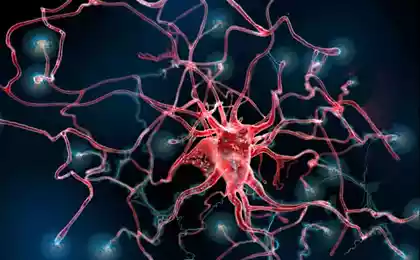383
What your mind sees first: The psychology of perception

Just look at the image and tell me what you saw first.
Imagine that you are looking at a mysterious image, and your brain instantly releases certain elements. Surprisingly, the same picture can show completely different images depending on the characteristics of our perception. Someone immediately sees women's lips, someone - thick crowns of trees, and someone notices the interweaving of roots. This process is happening so quickly that we are not even aware of it. But first impressions can tell us a lot about our personality type, our thinking patterns, and even how we interact with the world around us.
The Science Behind Visual Perception
Psychologists note that our primary perception reflects not only the work of the visual system, but also our basic attitudes. People who are prone to realism are more likely to notice obvious forms. Ambitious individuals gravitate towards symbols of growth and development. Progressive natures pay attention to hidden structures and opportunities for change.
Research shows that the first thing we notice in a multi-layered image is directly related to our cognitive preferences. Introverts and extroverts exhibit different patterns of visual attention, due to differences in the activity of certain areas of the brain. Especially interesting are the so-called “optical illusions of perception”, where the same image can be interpreted in different ways.
Perception test: lips, trees or roots
How to pass the test: Consider the image above carefully. What was the first thing you noticed, a woman’s lips, trees, or roots? Interestingly, perception can change depending on how far you look at the picture. Trust your first impression and don’t try to “rethink” what you see.
If you saw your lips first
You are a person who always perceives things as they are, and judge them by their true meaning without trying to change, decipher them, or understand their hidden meaning. It speaks to your honesty and straightforwardness in your approach to life.
Your characteristics: You value simplicity and clarity and are not prone to over-analysis or ulterior motives. People around you appreciate your sincerity and ability to see the essence of things without unnecessary speculation. You are practical and realistic in your assessments.
Council: Your ability to see things as they are is a rare gift. Use this quality to make informed decisions and help others in difficult situations.
If you saw the trees first
You are an ambitious person who is always looking ahead. You are an idealist and look for the best in every situation. Trees symbolize growth, development and the pursuit of heights, which fully reflects your philosophy of life.
Your characteristics: You have a strong vision for the future and the ability to motivate yourself and others. Your optimism and belief in the best helps you overcome challenges and find opportunities where others see obstacles.
Council: Use your ambition to set long-term goals. Develop leadership skills and don’t be afraid to inspire others with your example.
If you saw the roots first
You are a very progressive person who is always trying to improve and change things. Roots symbolize foundations and foundations, but in your case it means striving for transformation and creating a strong base for future change.
Your characteristics: You don’t take the status quo for granted and are constantly looking for ways to improve. Your ability to see the potential for change and your willingness to work on fundamental issues makes you a valuable agent of change.
Council: Put your energy into projects that can bring long-term benefits. Develop strategic planning skills and remember the importance of gradual but sustainable change.
Neuropsychology of Perception
Research by Dr. Susan Kane has shown that introverts and extroverts have different ways of processing information in the brain. This explains why we perceive the same stimuli differently.
Modern neuroscience has revealed that extroverts show increased activity in the anterior cingulate cortex, which is responsible for social interaction. Introverts show greater activity in the prefrontal cortex associated with planning and internal dialogue.
Interesting fact: Such layered images have been used in psychology for more than a century. The famous Rorschach test is based on the same principle – our brain projects internal attitudes on external stimuli. The modern version with lips, trees and roots has been adapted to explore social and introverted personality tendencies.
Practical Applications of Test Results
For realists (saw lips)
Your ability to see things as they are makes you an excellent analyst and consultant. In a professional field, you can excel in law, accounting, engineering or any activity where accuracy and objectivity are important. In personal relationships, people appreciate your honesty and ability to give direct, helpful advice.
For ambitious idealists (saw the trees)
Your desire for heights and your ability to see potential make you a natural leader. Consider a career in entrepreneurship, education, management, or creative professions. Your optimism and belief in the best helps build teams and inspire others to achieve.
For progressive reformers (see the roots)
Your desire to improve the world finds application in social work, scientific research, technological innovation or social activities. You are able to see systemic problems and find ways to solve them, making you a valuable agent of positive change.
How to develop awareness of perception
Exercise 1: Analysis of Life Decisions
Analyze your recent important decisions. Realists usually rely on facts, idealists on opportunities, and progressives on the potential for improvement. Understanding your pattern will help you make more informed decisions.
Exercise 2: The development of opposite qualities
If you are a realist, try dreaming about opportunities sometimes. If you are an idealist, pay attention to practical details. If you are a progressive person, appreciate what you already have. The balance of different approaches enriches the individual.
Exercise 3: Teamwork
In the team, look for people with other types of perception. Realists provide grounding, idealists provide inspiration, progressives provide innovation. This diversity creates synergy and leads to better results.
Limitations and criticism
It is important to understand that any psychological test, including a perception test, has its limitations. The human personality is complex and multifaceted, and cannot be fully described by a single parameter. In addition, our perception can change depending on mood, fatigue, life experience and a host of other factors.
Scientific approach: Modern psychology views introversion and extraversion as a continuum rather than as mutually exclusive categories. Most people exhibit traits of ambivertence, a combination of both.
Conclusion
This perception test opens an amazing window into our inner world. Whether you see the lips, trees or roots first, each type of perception has its own unique advantages and value.
Realists serve as the anchor of stability in our world, idealists inspire achievement, and progressive individuals move humanity forward. Understanding your type of perception is not a limitation, but a tool to use your natural talents more effectively and develop harmonious relationships with others.
Remember, the world needs all types of people. Your unique perspective is a gift that can benefit both you and society.
Glossary
Cognitive preferences – persistent patterns of information processing specific to a particular person
Introversion is a psychological type characterized by a focus on the inner world of experiences.
Extroversion is a psychological type characterized by a focus on the external world and social interaction.
Ambivertism – a combination of introverted and extroverted traits in one person
The prefrontal cortex is the area of the brain responsible for planning, decision-making and controlling behavior.
Anterior cingulate cortex – an area of the brain involved in emotion processing and social information
Mindfulness is the practice of mindful attention to the present moment without judgment or judgment.
Neuroplasticity – the ability of the brain to change its structure and function during life
Jung's Random Nonrandomness: The Synchronicity and Magic of Number 4
Where to find a child-to-adult translator























